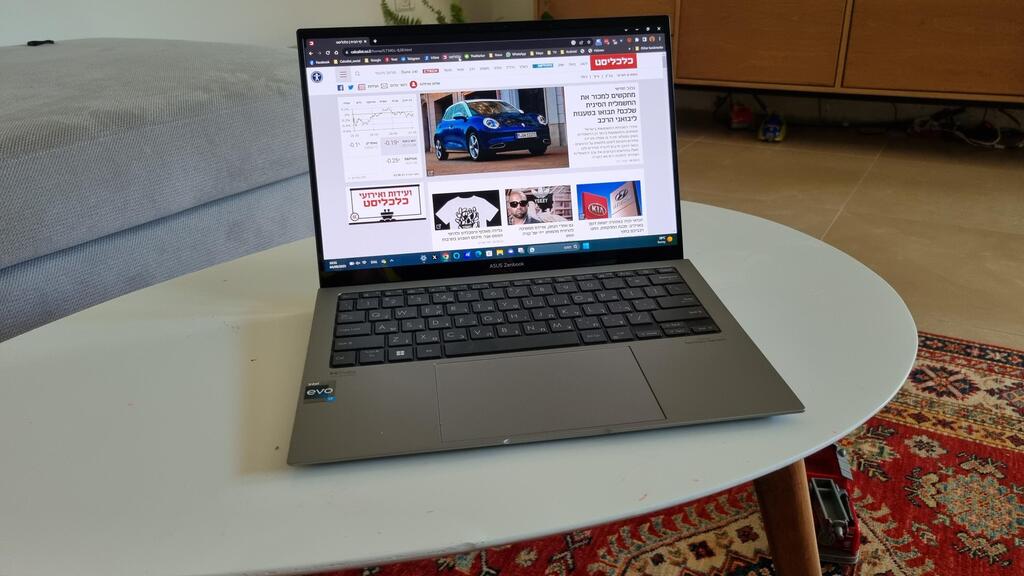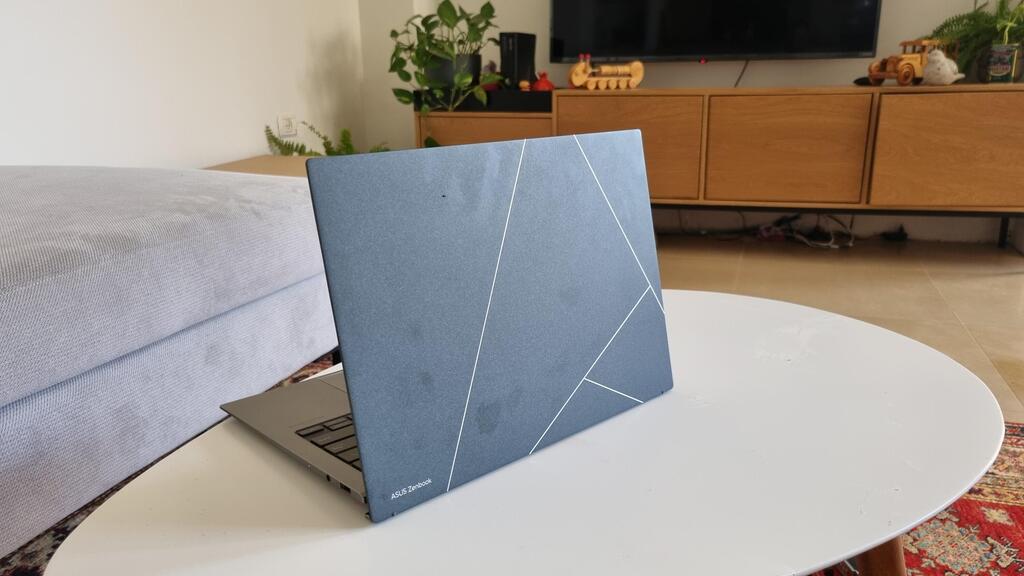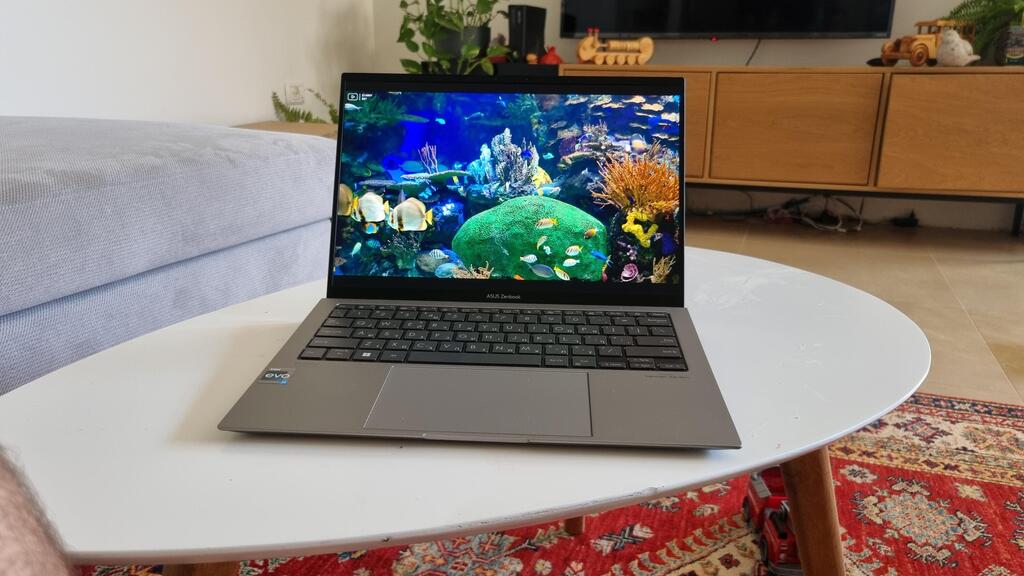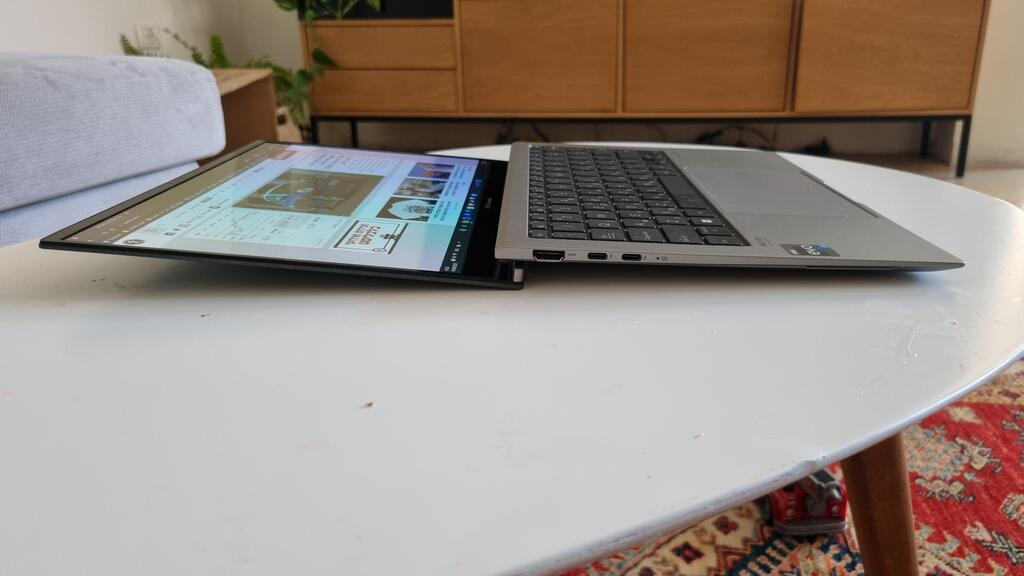
Laptop review
Asus ZenBook 13 S: A sleek companion for professionals
“The Asus ZenBook 13 S presents a compelling proposition for those seeking a lightweight, compact laptop that won't burden them on the go,” writes Itai Smuskowitz, CTech's laptop critic
Top Line
The Asus Zenbook 13 presents a compelling proposition for those seeking a lightweight, compact laptop that won't burden them on the go. It remains robust and capable enough for most tasks, and its screen accommodates diverse environments and multimedia consumption.
Two models are available, featuring an i5 processor with a 512-gigabyte drive or an i7 processor with a 1-terabyte drive. The price varies accordingly. While not budget-friendly, this falls within the price range of laptops like Lenovo's Yoga Slim, which weighs a half-kilogram more and doesn’t include an OLED screen in certain models.
There are certainly cheaper models around, but the value you will receive for your buck will not be the same, whether in terms of weight, screen quality, or performance.
Details
Individuals who require a portable computing solution swiftly realize that less translates to more in terms of size and weight. A 15.6-inch screen might be spacious and larger, complemented by a roomy keyboard and a sizable touchpad, but a laptop sporting a 13-14-inch screen is generally more convenient and comfortable for on-the-go use.
This doesn't entail compromising on performance; nowadays, one can select a computer with robust specifications without carrying a substantial weight. Asus's Zenbook S 13 serves as proof, boasting an impressively low weight and slim body while maintaining commendable performance, although this advantage comes at a cost.
Svelte and Lightweight, Yet Robust
Two features immediately grab attention upon the initial encounter with the Zenbook S 13: its weight and thickness. A weight of 1 kg is remarkably light within the context of the S 13’s category. Furthermore, when closed, the laptop's maximum thickness is merely one centimeter, an achievement that's truly remarkable. At its thinnest point, I measured less than half a centimeter. These dimensions resemble a slim folder, making it effortless to slip into a bag and carry along.
The external casing sports a stone-like texture adorned with geometric patterns that add a touch of character to the laptop, although opinions about its aesthetics may vary. However, it's important to note that this casing is prone to collecting fingerprints and smudges.
The screen, as indicated by its name, spans 13.3 inches. Personally accustomed to a 14-inch screen, I found the Zenbook's screen size to be more than satisfactory. Without the official specifications, I would have hardly noticed the difference. Upon opening the laptop, the lower edge of the screen acts as a stand, elevating the keyboard and creating space between it and the work surface. Although a different yet somewhat similar arrangement was encountered in the Zenbook 16, the purpose here is likely to aid in cooling the laptop and dispersing sound from the speakers.
This divergence in size is evident in the keyboard, which occupies less space compared to a 14-inch laptop, resulting in a slightly denser arrangement. Nevertheless, this doesn't hinder usability or adaptation; the keyboard remains comfortable to use. Illumination is provided beneath the keys, which can be manually activated or set to respond to ambient lighting conditions. There are no compromises in terms of the touchpad, which is actually quite spacious and convenient.
Impressive Screen and Abundant Connectivity
As previously mentioned, Asus illustrates that powerful specifications can be seamlessly integrated into such a slim laptop. The model provided for testing was equipped with a 13th generation Intel i7 processor, complemented by an Intel Iris graphics card, 16 gigabytes of RAM, and a 1 terabyte harddrive. These specifications are well-suited for day-to-day tasks and more, although gaming isn't its strong suit.
Even during regular tasks and even when the laptop was charging without active usage, there were moments when the fans became operational. They aren't excessively loud, yet their presence in the background was somewhat unexpected. Asus's management software allows users to switch the fans to a quieter mode.
One might expect that thin laptops would compromise on connectivity, but this isn't the case here. The Zenbook S 13 offers standard HDMI, a conventional headphone jack, two USB-C connections compliant with the Thunderbolt 4 standard, a USB-A connection, and a memory card reader. This is an impressive array of options.
The laptop adheres to Intel's Evo standard, which mandates rapid wake-up from sleep mode, swift WiFi connectivity, and efficient battery usage, among other criteria. While the laptop does indeed wake up promptly, this didn't strike me as exceptionally different from other models. Charging the battery is swift using the provided 65-watt USB-C charger. It took just 15 minutes to charge from 10% to 30%, which provides around 3 hours of usage, and roughly half an hour to reach 50% charge. A full charge requires approximately an hour and a half. A fully charged battery enables 8-9 hours of work.
The full name of the laptop is Zenbook S 13 OLED, and the screen quality is readily apparent. The display of photos and videos is outstanding, characterized by excellent color reproduction and high brightness, suitable for use even under direct sunlight. The screen isn't a touchscreen, likely to maintain a lightweight design and keep costs in check.
The laptop is equipped with Harman Kardon speakers that support Dolby Atmos surround sound. In practice, they deliver solid and potent audio, particularly considering their placement within a slim chassis. However, the sound quality doesn't rank among the most exceptional I've encountered in a laptop. Asus's management software offers various listening modes (game, movie, music, etc.) or an automatic adjustment mode, which yielded superior results in line with the Zenbook 16.

















